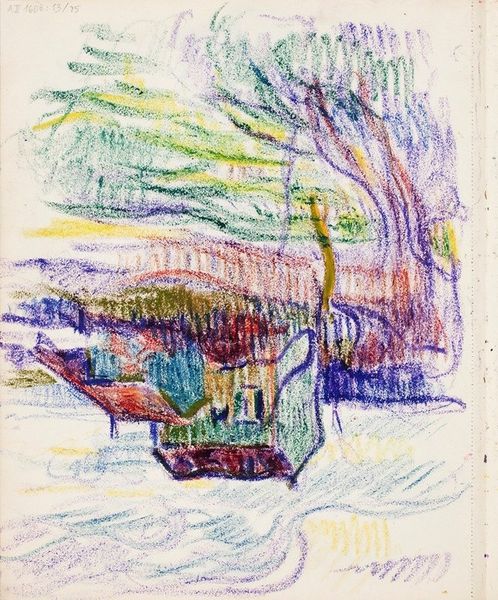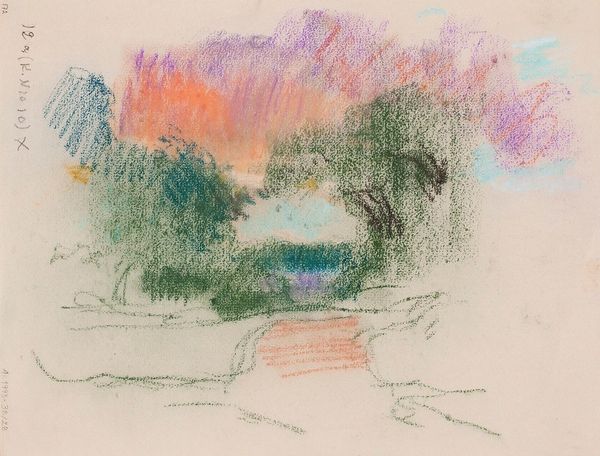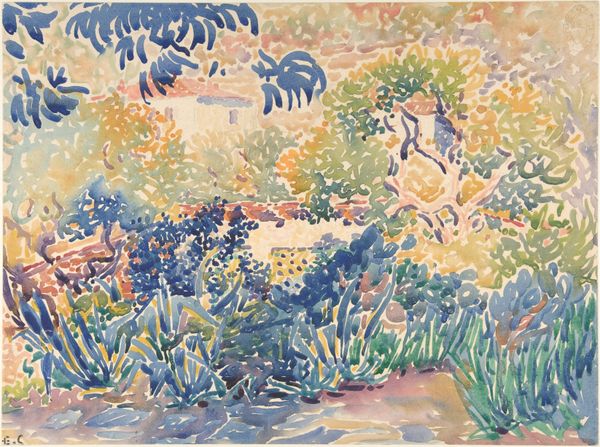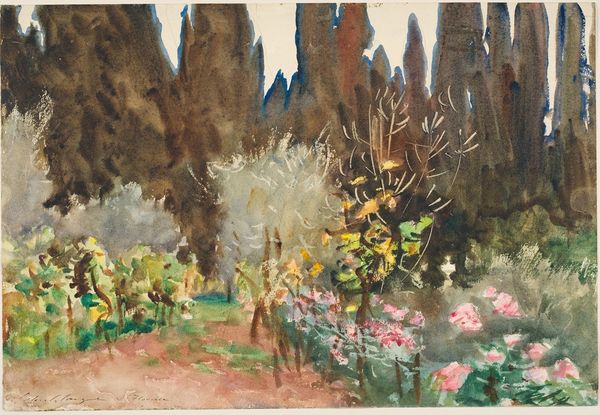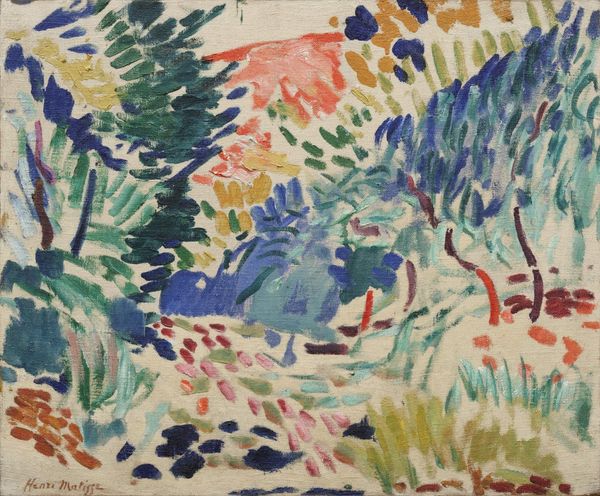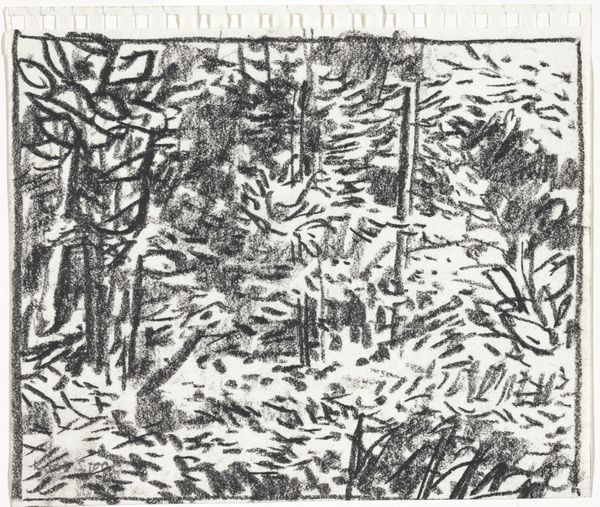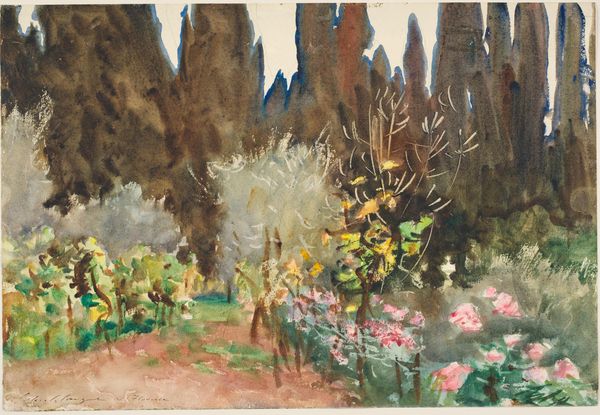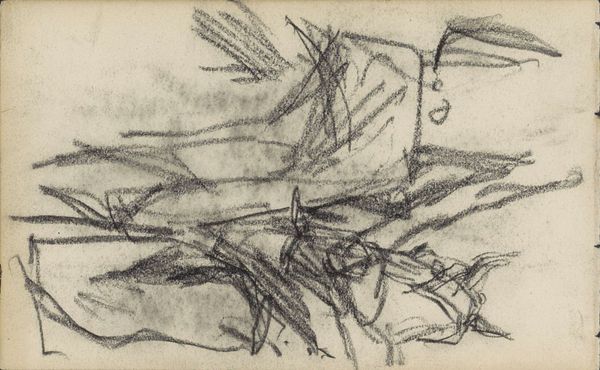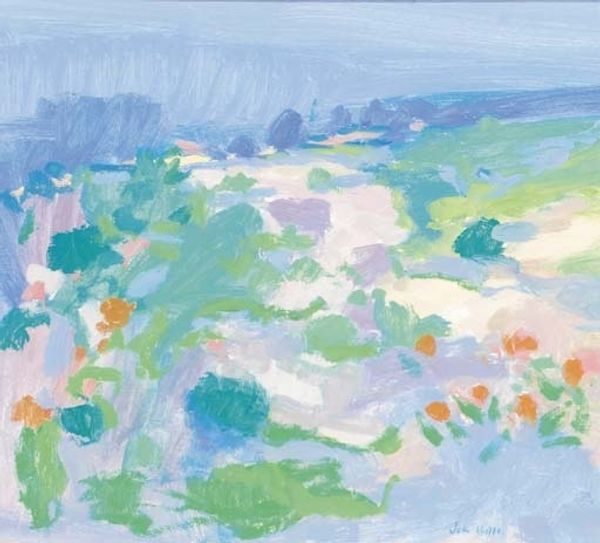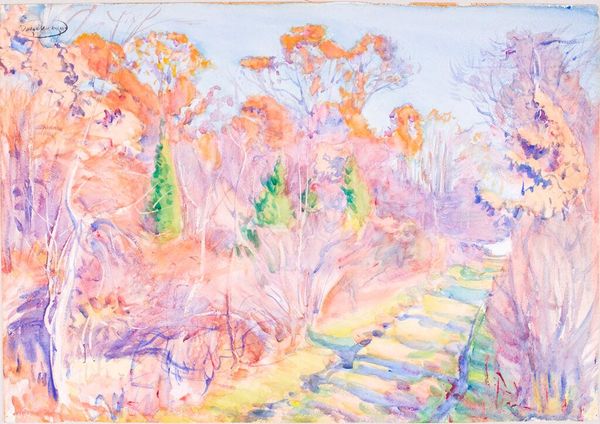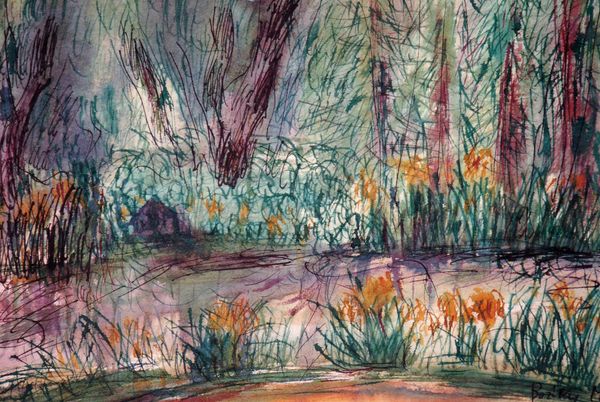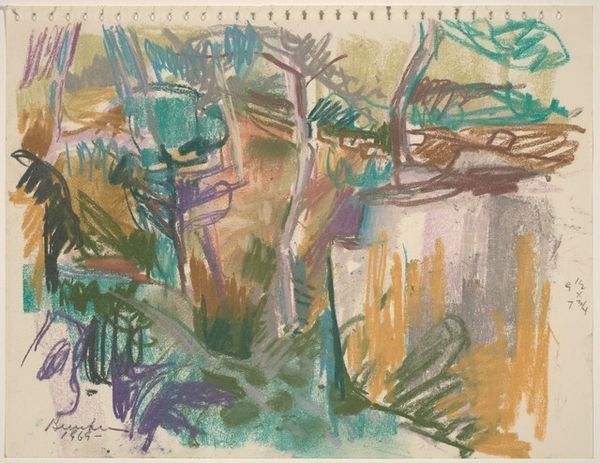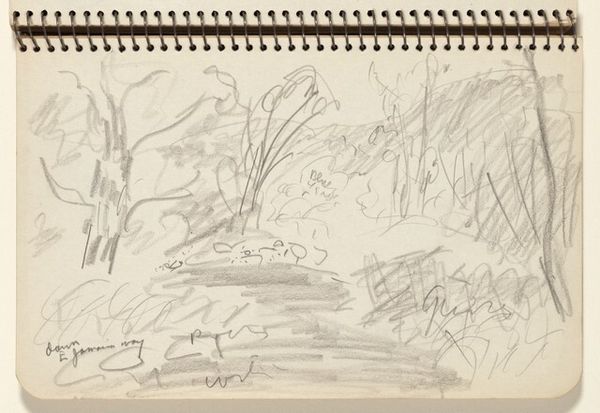
Copyright: Public Domain: Artvee
Editor: Magnus Enckell's "Rantamaisema," created around 1910-1911, presents us with a landscape rendered in coloured pencil. The almost dreamlike quality of the scene really captivates me. What are your initial thoughts? Curator: It's interesting that you describe it as dreamlike. Looking at "Rantamaisema" through the lens of its time, Post-Impressionism was heavily influenced by a burgeoning interest in psychology and the subconscious. Notice how the unconventional colour choices and somewhat abstracted forms challenge traditional landscape painting. Do you think Enckell was more interested in conveying a feeling rather than representing a specific place? Editor: That makes a lot of sense. I guess the colours felt like a personal interpretation of nature rather than a literal depiction. So, his subjective experience is central? Curator: Precisely! And think about the social context: at the turn of the century, there was growing desire for individual expression against increasingly standardized urban life. Enckell’s focus on personal emotional experience would then participate in a larger cultural conversation about self-expression and freedom. How does knowing this change your understanding? Editor: I think it gives the image more depth. It's not just a pretty picture; it's an emotional response tied to cultural shifts. It makes me consider what "landscape" meant for people at that time. Curator: Indeed. Art acts as a mirror to society, reflecting our concerns, anxieties, and aspirations. Looking at Enckell's landscape, we can start understanding more than just visual appeal, but delve into historical undercurrents. Editor: Thank you, I've really understood how historical context matters for this kind of study. Curator: My pleasure! It has been my pleasure to analyze this together!
Comments
No comments
Be the first to comment and join the conversation on the ultimate creative platform.
